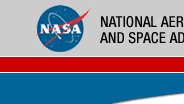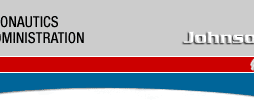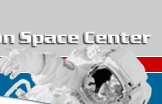We all recognize the names of JSC’s male space pioneers:
Flight Directors Chris Kraft and Gene Kranz; astronauts Alan
Shepard, John Glenn, and Neil Armstrong; Center Director Bob
Gilruth; and Engineering Director Max Faget. Few, however,
know the names of JSC’s female trailblazers. Women have
played a significant role in JSC’s endeavors since the
beginning and in a variety of ways. For instance, eight of
the thirty-six people transferred from Langley Research Center
to the Space Task Group (STG), the predecessor to the Manned
Spacecraft Center (MSC), were women. In celebration of women’s
history month the JSC History Office commemorates the contributions
of three of the Center’s amazing women and invites you
to visit the History Portal to read their transcripts and
to learn more about other women not included in this short
feature.
Catherine T. Osgood began her NASA career as a math aide,
or a computer, with the STG in 1959. (In those days NASA employed
women as computers, to provide data analysis with the use
of calculators and to plot data.) Very few women worked as
engineers for NASA at the time. Osgood, who had worked numerical
problems with NASA engineers and had a bachelor’s degree
in mathematics, eventually became an aeronautical engineer
at MSC, where she worked on spacecraft rendezvous. Learning
how to dock and rendezvous in space was vital to the lunar
landing, and engineers like Osgood gained a vital understanding
of rendezvous techniques during the Gemini Project that resulted
in the successful Moon landings.
Ivy Hooks also held a degree in mathematics when she came
to work at MSC in 1963. In April 1969, just a few months shy
of the first lunar landing, she became a member of the original
design team for the Space Shuttle Orbiter. One of only two
female engineers assigned to the group, Hooks and the team
spent months working in isolation on a configuration for the
Orbiter, which—unlike the capsules of earlier generations—would
be reusable and land like a plane. They came up with a concept
that specified, among other things, the vehicle’s size,
weight, how much time the Orbiter could spend in space, and
how far the vehicle could fly before landing. Hooks even looked
at the feasibility of putting air-breathing engines on the
Orbiter. In 1978, she received the coveted Arthur S. Fleming
Award, which recognizes the work of outstanding federal employees,
for her engineering contributions to the Shuttle program,
particularly her work on the separation of the external tank
and solid rocket boosters from the Shuttle and separation
systems for the Orbiter and Shuttle Carrier Aircraft for the
Approach and Landing Tests.
Dottie Lee started working at the National Advisory Committee
for Aeronautics Langley Memorial Aeronautical Lab in 1948,
after completing a degree in mathematics at Randolph-Macon
Women’s College in Lynchburg, Virginia. She too started
out as a computer. When Faget’s secretary went on her
honeymoon, Lee filled in for her. On her last day he asked
if she wanted to continue working for him. “I thought
he was being funny, because I don't type, and I knew that
this was the last day and Shirley was returning Monday. I
said, ‘Sure,’ in a very flip way,” not realizing
he was serious. With that, Faget took her under his wing and
trained her to become an engineer.
Years
later, before the launch of the Space Shuttle, Lee, then the
Aerothermodynamics Subsystems Manager for the Orbiter, attended
an Aeronautical Space Advisory Panel at Ames Research Center.
The only woman listed on the program and invited to speak,
she gave a forty-five minute presentation about the spacecraft’s
heat transfer. Afterward she remembered that one of the men
who heard her presentation approached her as she packed up
her things. “Based on what you have told us today,”
he said, “we're going to recommend to the President
that we launch the Shuttle." That was one of her proudest
moments in the space program.
Transcripts
for Osgood, Hooks, and Lee can be found at: http://www.jsc.nasa.gov/history/oral_histories/oral_histories.htm.
An additional source of information about women’s history
at NASA can be found in the Herstory transcripts: http://www.jsc.nasa.gov/history/oral_histories/herstory.htm.
A selection
of excerpts from interviews and links to the oral history
interviews conducted with some of the women who contributed
to NASA’s history can be found on the JSC History Portal:
http://www.jsc.nasa.gov/history/special_events/WHM.htm.

|





